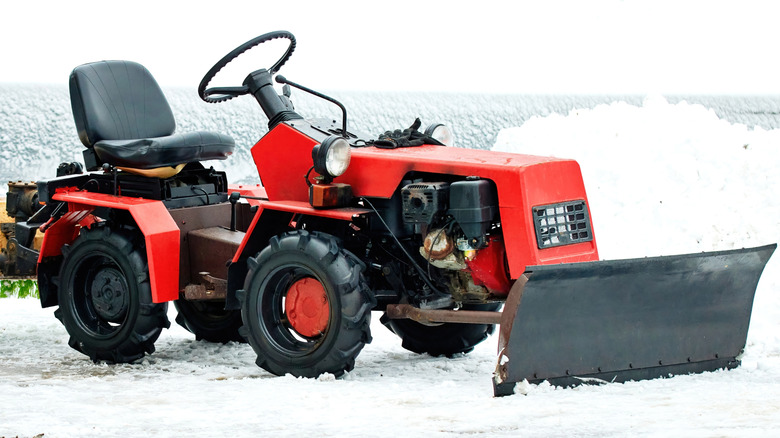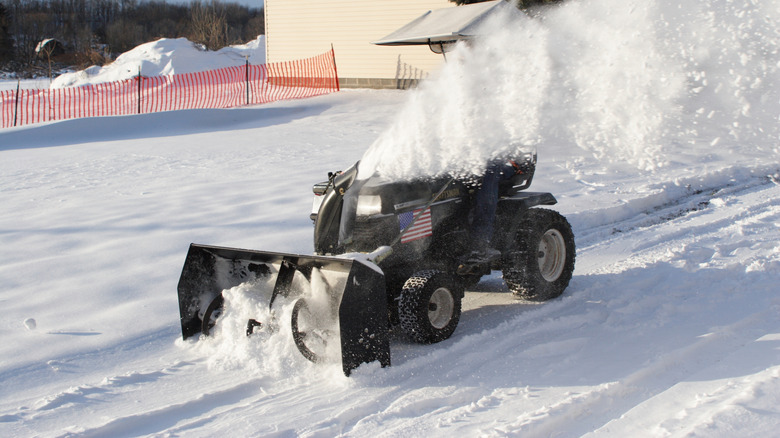How To Use Your Riding Lawn Mower To Clear Out & Remove Snow This Winter
Dealing with heavy snowfall can be tough, especially if you live in an area that suffers through harsh winters. But if you have a riding mower, there are other ways to use it besides mowing, including moving snow. Turning it into a snowplow could help your situation, but be sure your mower can actually handle the work. If you're riding a sturdy garden tractor with a strong transaxle and your motor is at least 20 horsepower, you're probably covered.
You'll have to remove the deck to get the room you need to clear the snow itself. Doing this will also decrease the chances of damaging your mower. For improved traction, put some snow chains on your tires. Then all you need is a snow blower or snow blade attachment for your John Deere, or whatever brand you have. It's also a good idea to add some weight to the mower, either on the wheels or on the back, to counter the added weight of the attachment you're using on the front. Then all you need is some snow and you're all set.
If you're curious about whether or not your model of garden tractor or lawn tractor is compatible with this sort of modification, consult your owner's manual. If you don't happen to have it, you can always contact your local dealer or visit the manufacturer's website. The last thing you want to do is be halfway through your driveway with a mower that's dead in its tracks.
Best practices for winter plowing
Plowing forward on a riding mower equipped to remove snow gives you a strong push, which is perfect for packed snow. But you'll want to watch your angle and adjust as needed, so you're not piling up the snow unevenly. Otherwise, you're just pushing the problem to another location. You'll also want to give yourself some room between passes, so you're not driving over the same path every time, which can take all day.
It's important to be safe while you work as well. Not only should you be dressed warmly, but you should also use protective eyewear. This will help protect you from any ice or rocks that could become airborne as you're working. Be aware of your surroundings, and watch for kids, pets, or anyone else who might be too close. Double-check your path for any obstacles, and take your time. Don't turn too sharply, as you could potentially tip over on an icy patch. Once you finish, inspect your mower and make sure everything is still working properly.
Since you'll likely have a few months before needing your mower again, you should take steps to maintain it. Start by immediately storing the mower in a dry place to avoid rust. Check the fluids, and regularly grease the moving parts to ensure a smooth operation the next time out. Make sure all electrical connections are solid, and tighten any bolts that need it. The more you maintain, the better off you'll be.

